Nanoxia Deep Silence 1 Case Review: You Asked For It, You Got It
by Dustin Sklavos on November 27, 2012 12:01 AM EST- Posted in
- Cases/Cooling/PSUs
- quiet
- ATX
- Nanoxia
Noise and Thermal Testing, Stock
The Nanoxia Deep SIlence 1's cooling design introduces a few minor wrinkles into the usual testing procedures. I can't complain about the inclusion of an analog fan controller or the switchable chimney in the top of the case, but it does increase the amount of time spent testing the case. To simplify things, I opted to test the DS1 with the fans turned all the way down and all the way up, and with the chimney opened and closed at both fan settings. Even at their lowest settings, the fans do still spin, but I found myself incredibly surprised by some of the results and you may very well be, too.
Ambient temperature during testing was between 22C and 23C.
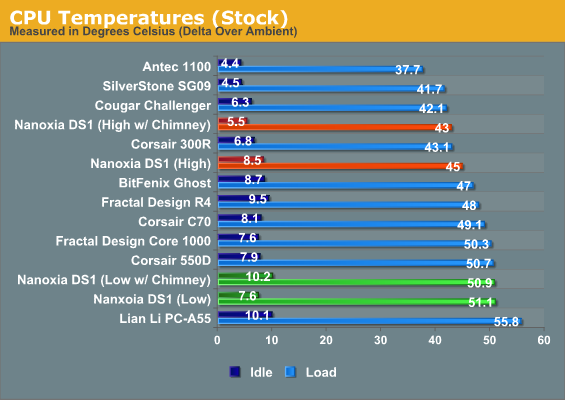
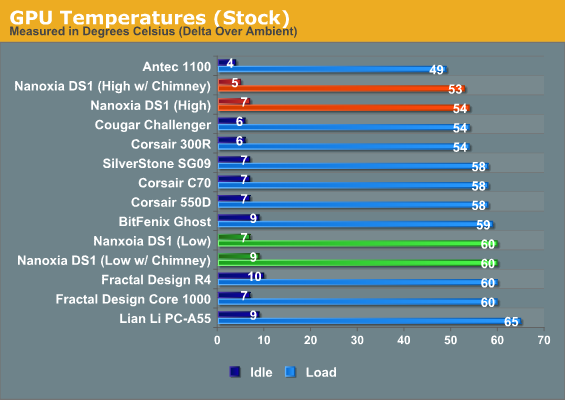
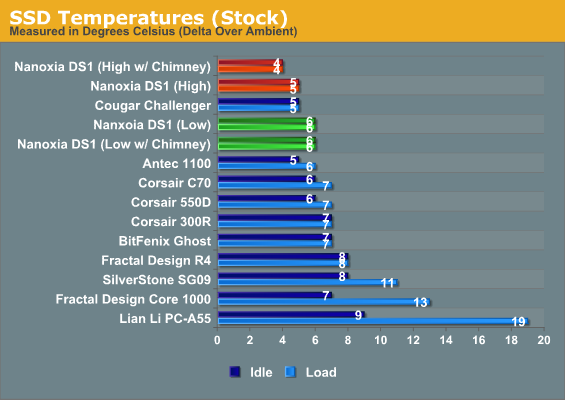
Temperatures with the fans turned all the way down are pretty poor, but if you max them out the DS1 easily beats the Corsair 550D and BitFenix Ghost. Pay special attention to how the DS1 ranks against the 550D, because if Nanoxia can get it out here at their targeted MSRP, they're going to be undercutting Corsair. What's really surprising, too, is that the DS1's load thermals with the fans all the way up are actually competitive with performance-oriented cases.
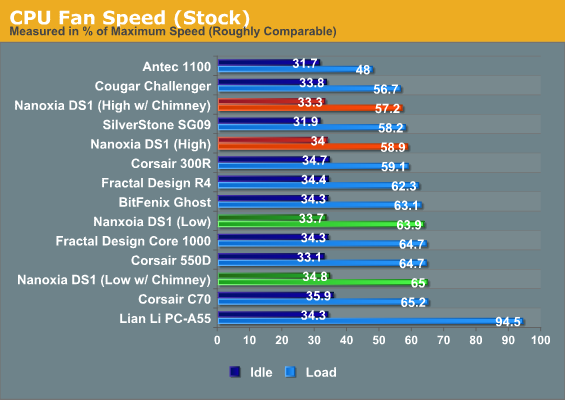
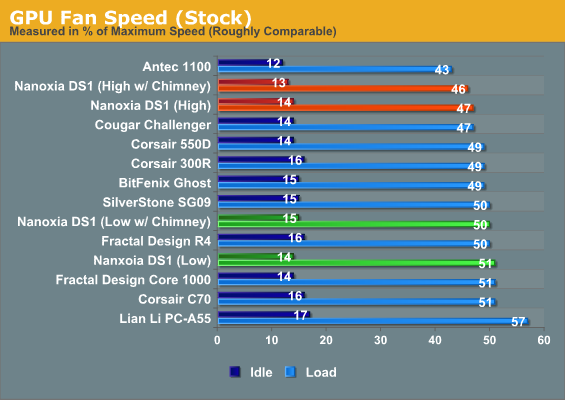
Fan speeds are reflective of the differences in thermal performance we saw. With the case fans on high, the Cooler Master Hyper 212 Evo and GTX 560 Ti's fans don't have to work nearly as hard.
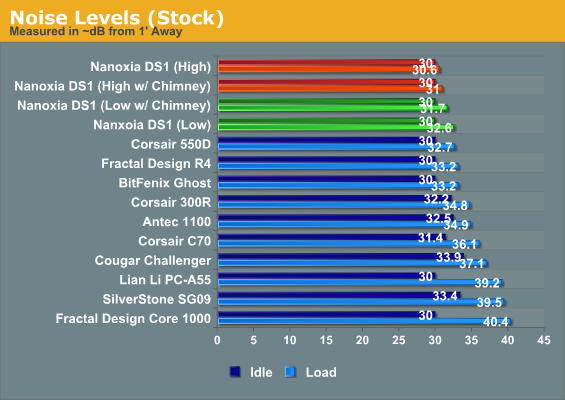
And here's the haymaker. Even with fans turned all the way up, the DS1 is still quieter than every other case. There's an audible difference between low and high that's unfortunately beneath the noise threshold of my sound meter; at low the case can really only be heard in a silent room in the dead of night. That said, the fans Nanoxia includes with the DS1 are very efficient, as is the cooling design of the case. More powerful (and louder) fans could probably easily shoot thermal performance to the top of the charts.
I'd also like to point out that the DS1's chimney has a very negligible effect on thermals and noise, which is both good and bad news depending on your perspective. It's good news because it means that keeping it open won't appreciably increase the noise the case produces, but bad news because it doesn't actually contribute in a meaningful way to case cooling.










75 Comments
View All Comments
charliem76 - Thursday, March 28, 2013 - link
Glad to know I'm not the only one reviving an old thread.I'd love to see a temp/sound test with all the fan bays filled with the largest size they hold, on low.
From what I see, it has 7 fan slots, and ships with 3, according to newegg, so that's how I assume you tested it.
Deders - Saturday, February 22, 2014 - link
You can remove the top 2 drive bays and slot one of them in the space on the bottom between the PSU and the fixed drivebay, leaving 2 thirds of one fan to cool the closest drives and 1 and 1 thirds worth of direct airflow towards the GPU and CPU. It makes a huge difference.emperius - Saturday, July 6, 2013 - link
quietpcusa.com has the Nanoxia Deep Silence 1 in stock as of this comment for $100.emperius - Wednesday, July 24, 2013 - link
Scratch that. UK QuietPC.com has them but beware of outrageous shipping.randl - Friday, November 29, 2013 - link
All well and good. I bought the case and this may be also a nitpick, however, most Motherboards these days come with Molex fan plugs for intelligent fan control and this case comes with old-type 3 wire fan plugs which defeats the purpose. In addition, if you buy adapters (only from England so far), this case is no longer competitive. It also comes with a "Molex to Power adapter" which doesn't seem to plug in anywhere (as far as I could tell). The whole "fan" power up thing is flaky at best.